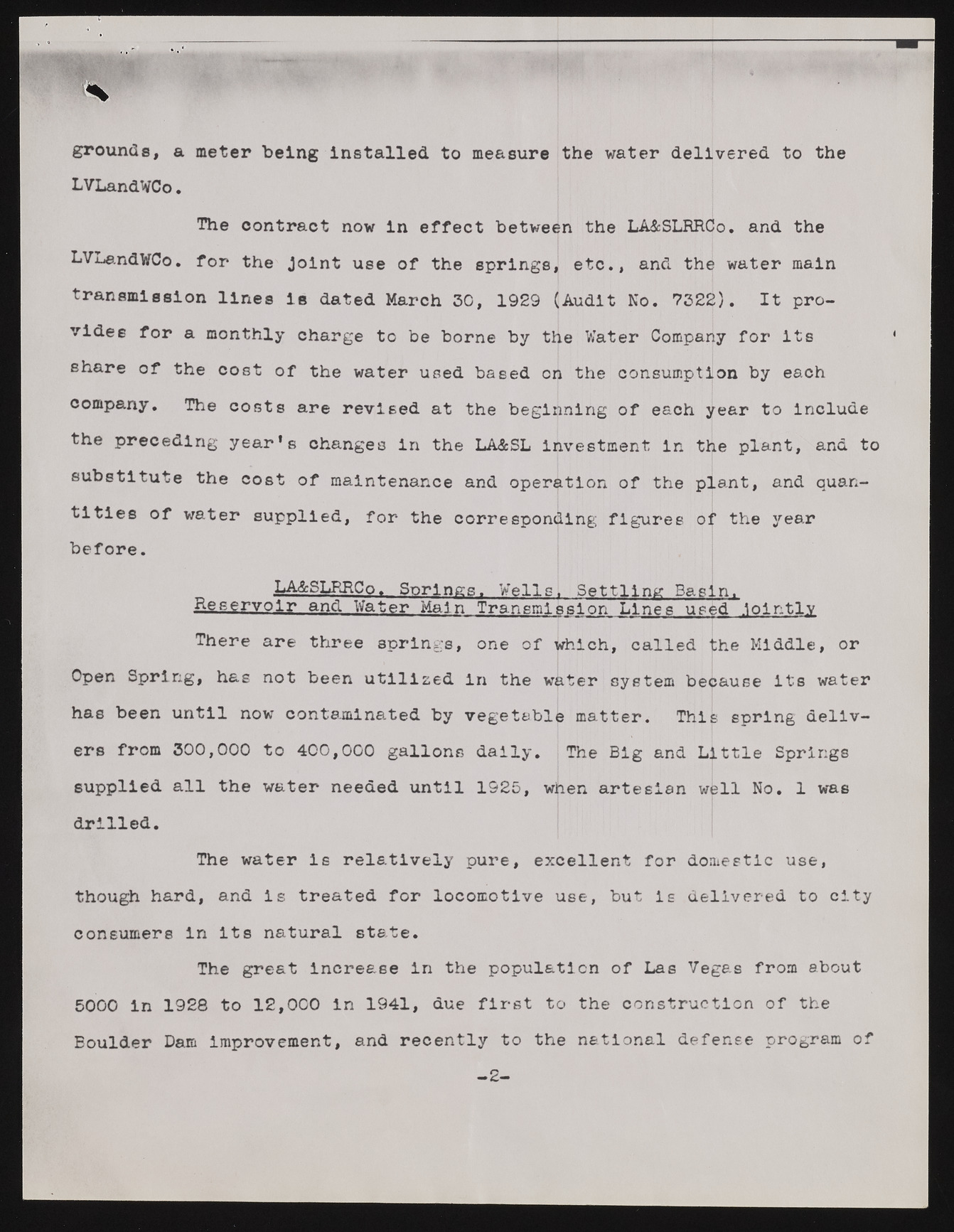Copyright & Fair-use Agreement
UNLV Special Collections provides copies of materials to facilitate private study, scholarship, or research. Material not in the public domain may be used according to fair use of copyrighted materials as defined by copyright law. Please cite us.
Please note that UNLV may not own the copyright to these materials and cannot provide permission to publish or distribute materials when UNLV is not the copyright holder. The user is solely responsible for determining the copyright status of materials and obtaining permission to use material from the copyright holder and for determining whether any permissions relating to any other rights are necessary for the intended use, and for obtaining all required permissions beyond that allowed by fair use.
Read more about our reproduction and use policy.
I agree.Information
Digital ID
Permalink
Details
More Info
Rights
Digital Provenance
Publisher
Transcription
grounds, a meter being installed to measure the water delivered to the LVLandWCo. The contract now in effect between the LA&SLRRCo. and the LVLandWCo. for the Joint use of the springs, etc., and the water main transmission lines is dated March 30, 1929 (Audit No. 732^). It provides for a monthly charge to be borne by the Water Company for its share of the cost of the water used based on the consumption by each company. The costs are revised at the beginning of each year to include the p r e c e d i n g year's changes in the LA&SL Investment in tile plant, and to substitute the cost of maintenance and operation of the plant, and quantities of water supplied, for the corresponding figures o^ the year before. LA&SLPJRCo. Springs. Wells. Settling Basin. R e s e r v o i r and Water Main Transmission Lines used jointly There are three springs, one of which, called ^he Middle, or Open Spring, has not b een utilized in the water system because its water has been until now contaminated by vegetable matter. This spring delivers from 300,000 to 400,000 gallons daily. The Big and Little Springs supplied all the wat e r needed until 1525, when artesian w£ll No. 1 was drilled. The water Is relatively pure, excellent for domestic use, though hard, and is treated for locomotive use, but is delivered to city consumers in its natural state. The great increase in the population of Las Vegas from about 5000 in 1928 to 12,000 in 1941, due first to the construction of the Boulder Dam improvement, and recently to the national defense program of

